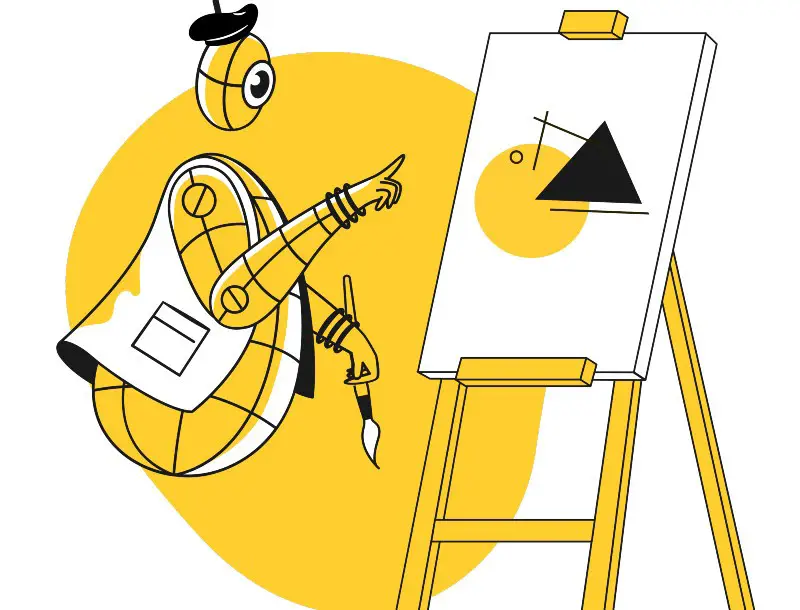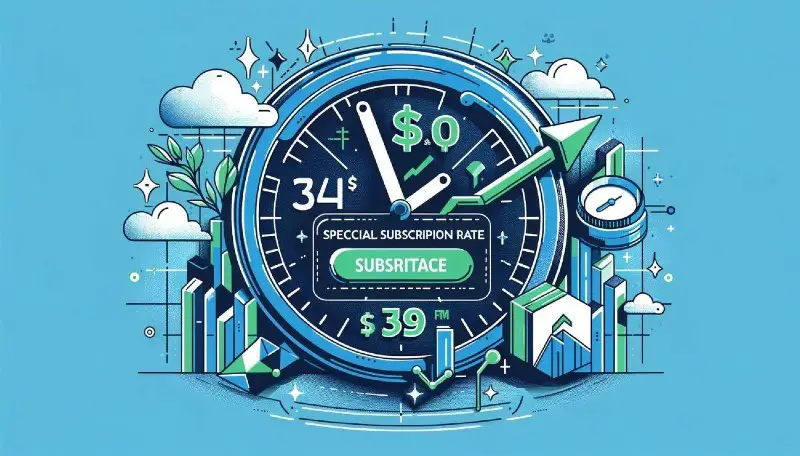Introduction
Artificial Intelligence (AI) has steadily permeated various aspects of human life, from automation in manufacturing to predictive analytics in marketing. Yet, one arena where AI’s impact is unexpected yet profound is in the realm of art. Traditionally seen as a distinctly human endeavor, art is experiencing a technological revolution as AI begins to influence its creation, consumption, and comprehension. In this blog post, we delve into the evolving role of AI in art, and the fascinating intersection of technology and creativity.
The idea of AI contributing to art might seem a paradox to some. After all, art is deeply personal and subjective, based on human emotions and experiences. However, AI has proven its potential in transcending these boundaries. AI’s capabilities in pattern recognition, complex decision-making, and learning have allowed it to participate in the creative process, opening up novel avenues of artistic expression and interpretation.
We will explore how AI is changing the landscape of art, from music and painting to digital creations. In doing so, we unravel the unique relationship between AI and human creativity, which challenges our definition of art and pushes the boundaries of what’s possible in the art world. Let’s begin this intriguing journey.
Embark on a journey to redefine your online business by exploring our e-Commerce wholesale platform, where you’ll find an extensive array of products and suppliers to elevate your retail game. Venture beyond the realms of conventional e-Commerce.
Understanding the Role of AI in Art Creation
Artificial Intelligence is progressively finding its place in art creation, primarily through machine learning and neural networks. Machine learning algorithms analyze vast amounts of data, identify patterns, and make predictions or decisions without being explicitly programmed to perform these tasks. When applied to art, these algorithms can learn from thousands of images, styles, and techniques, and then produce original artworks.
One of the most prominent examples is the use of Generative Adversarial Networks (GANs) in creating artwork. GANs consist of two parts: a “generator” that creates images and a “discriminator” that attempts to distinguish between the generated images and real ones. As they learn from each other, the generator improves in producing images that the discriminator cannot differentiate from actual artworks. This technology was used to create the first AI-generated portrait, “Edmond de Belamy,” which was sold at Christie’s auction house for a whopping $432,500 in 2018.
How AI is Changing the Definition of Art
Artificial Intelligence is not just creating art; it’s changing our understanding of what art is. Traditional definitions of art are being challenged as AI begins to blur the lines between creator and tool, and between creativity and programming. As AI generates art that mirrors, and sometimes surpasses, human-created art in complexity and aesthetic appeal, it raises philosophical questions about creativity, originality, and authorship in the art world.
For instance, the aforementioned portrait “Edmond de Belamy” sparked a debate about the authenticity and ownership of AI-produced art. The portrait was created by the art collective Obvious using an algorithm developed by Robbie Barrat. This raised questions about who the actual artist was – the AI, the developers of the AI, or the individual who developed the algorithm used by the AI.
AI also challenges our understanding of creativity. Historically, creativity has been seen as a uniquely human trait. But as AI creates works that evoke emotional responses and provoke thought, it makes us reconsider whether creativity can be artificially replicated or whether it remains an inherently human attribute. This is not just an academic debate but a practical consideration for artists and the wider art community.
AI’s role in art is a testimony to the ever-expanding capabilities of technology and its potential to redefine traditional domains. However, this intertwining of art and AI also brings with it complex questions around the nature of art and creativity, authorship, and the ethical use of AI in creative processes. These are discussions that will continue to evolve as AI becomes more sophisticated and its presence in the art world becomes more pervasive.
Artificial Intelligence in Music: The Next Big Revolution?
Artificial Intelligence has also ventured into the world of music, and the results have been nothing short of fascinating. From composing original scores to mastering intricate musical genres, AI is transforming the way music is created and understood.
OpenAI’s MuseNet is an AI system that can generate 4-minute musical compositions with ten different instruments and can compose music in various styles from country to Mozart to the Beatles. AIVA (Artificial Intelligence Virtual Artist), another AI music composition program, was officially recognized as a composer and is now a member of the Society of Authors, Composers, and Publishers of Music. These advancements suggest a future where AI might work in tandem with artists to create new, unique pieces or even become artists themselves.
However, just like AI-created visual art, AI-composed music has sparked debate. Critics argue that while AI may imitate styles and follow patterns, it doesn’t understand the emotion behind the music. But proponents counter that AI music can expand creative possibilities and enable the production of music in novel and innovative ways.
Step into the fascinating world of the present, where artificial intelligence (AI) is not a distant dream, but a thrilling reality. Experience the seamless integration of AI in your everyday gadgets – your smartwatch, the intuitive smart speaker, the diligent security alarm, or the customer service chat box – all are manifestations of the awe-inspiring AI technology. Curious about the behind-the-scenes of AI creation? Pondering if AI is actually real? The enlightening ‘Artificial Intelligence For Dummies’ has all the answers you seek.
Commencing with a fundamental understanding of AI, this reference demystifies the intricate topic of AI for you. From the usage of data, algorithms, to the specialized hardware, the book is an easy-to-understand guide to the universe of AI that breathes life into the devices you simply can’t do without.
Here’s what the book promises to offer:
- Debunk the hyperbole surrounding artificial intelligence and get a true picture
- Delve into the astonishing capabilities of AI and learn about its boundaries
- Learn how AI accelerates data collection and analysis, enabling faster, informed decisions
- Explore how AI breathes life into hardware applications such as drones, robots, and vehicles
- Discover the potential applications of AI in diverse fields like space, medicine, and communication that are on the horizon
It’s worth noting that nearly 80% of the devices you interact with on a daily basis rely on some form of AI. While you don’t need to understand AI to use your smart speaker or engage with a bot, possessing knowledge about its inner workings will undoubtedly make you feel smarter. So, why wait? Grab this accessible guide today and unravel the captivating secrets of AI!
AI and Digital Art: A New Aesthetic Paradigm
Digital art, a genre where art meets technology, seems like the perfect breeding ground for AI, and indeed, AI has had a significant impact in this field. AI has empowered artists with new tools, allowing them to experiment with various forms and styles, often resulting in artworks that are interactive, dynamic, and immersive.
Take, for instance, the work of Refik Anadol, a media artist who uses AI and machine learning to create captivating digital art installations. His work “Machine Hallucination,” for instance, uses AI to create an immersive visual experience based on millions of images of New York City.
Another noteworthy example is Google’s DeepDream, an AI program that uses a convolutional neural network to find and enhance patterns in images, thereby creating surreal and dream-like artworks. This offers fascinating new perspectives on the aesthetic potential of AI and its ability to generate unique artistic imagery.
Revitalize your Website by embracing the innovative advantages of ChatGPT, transforming customer engagement, streamlining operations, and unlocking new avenues for growth and success.
The Intersection of AI and Creativity
The impact of AI on art is not only about the creation of artwork. It also involves an exciting dialogue between AI and human creativity. On one hand, artists are harnessing AI to expand their creative capabilities, while on the other, AI’s creative outputs are influencing artists and their approach to art.
This intersection of AI and creativity opens up a realm of possibilities and challenges. It encourages artists to experiment with new mediums and techniques, enriches the audience’s experience, and propels art into a future that is both exciting and unpredictable. However, it also poses questions around the ethical and philosophical implications of AI in art, which are just as crucial to explore.
As AI continues to evolve and become more sophisticated, the landscape of art will undoubtedly transform along with it. The intriguing relationship between AI and art will continue to spark debate, inspire creativity, and challenge our preconceived notions about the boundaries of art. Despite the uncertainties and questions, one thing is clear: the future of art in the age of AI promises to be an exciting journey, full of innovation, discovery, and new forms of expression.
Conclusion
Artificial Intelligence’s role in art is a testament to how technology is not just a tool, but a partner in the creative process. From AI-generated paintings and music to its impact on digital art, AI is redefining the boundaries of creativity and propelling art into a future that is simultaneously thrilling and unpredictable.
The discourse surrounding AI and art is vibrant and multi-faceted. It celebrates the potential of AI to enhance artistic expression and incites intriguing conversations about the nature of creativity, the definition of art, and the ethical implications of AI’s role in art.
However, this amalgamation of art and AI also prompts reflection. As we marvel at an AI’s ability to create, we must also engage with questions about authorship, creativity, and the role of emotion in art. Moreover, as AI becomes more integrated with the creative process, we need to explore and address the ethical considerations that arise.
Looking to the future, the relationship between AI and art holds immense potential. As AI continues to advance, artists will have new, powerful tools at their disposal, offering unprecedented opportunities for innovation and experimentation. Similarly, audiences will have novel ways to experience and engage with art.
Yet, it is not just about AI transforming art; art too can shape AI. The art world’s response to AI can influence how this technology develops and is applied in other areas, making it a mutually transformative relationship. While the future of AI in art is filled with possibilities, it’s the challenges and questions that make this journey so compelling and worthwhile.
In the end, the impact of AI on art is a reflection of the broader relationship between humans and technology. It’s a narrative about collaboration, co-creation, and the shared journey of discovery. And as this story unfolds, it continues to expand the canvas of human creativity, adding new colors, shapes, and textures to the palette of human expression.





